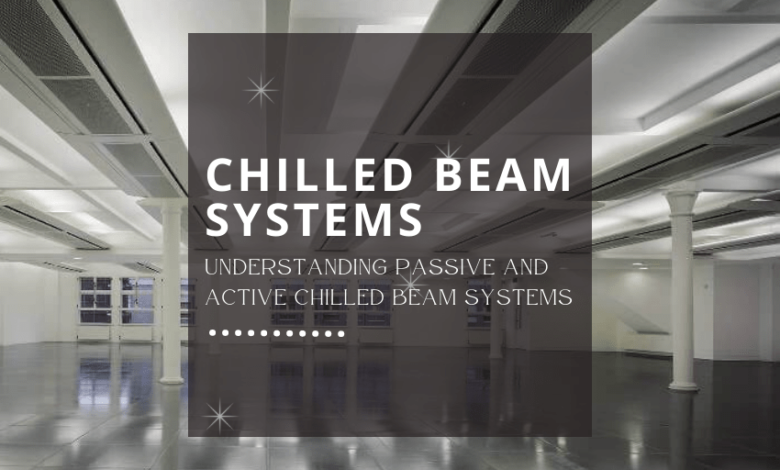Understanding Passive and Active Chilled Beam Systems

Chilled beam systems are accessible in three varieties: passive, active and integrated/multiservice beams. The contrast among passive and active chilled beams centers around the manner in which wind streams and outside air are brought into the space. Both of these frameworks are currently getting huge consideration in the U.S.and Canada.
What is a passive chilled beam?
A passive chilled beam comprises a blade-and-cylinder heat exchanger, contained in a lodging (or packaging), that is suspended from the roof. Chilled water goes through the tube. Warm air from the space ascends toward the roof, and the air encompassing the chilled beam is cooled, making it plummet back toward the floor, making convective air movement to cool the space. This permits a passive chilled beam to provide the cooling of the space without the utilization of a fan.
What is an active chilled beam?
An active chilled beam additionally comprises a blade-and-cylinder heat exchanger contained in a lodging that is suspended from, or recessed in, the roof. The essential distinction is that an active chilled beam requires an essential air supply.
This primary air goes through spouts, which prompts air from the space up through the cooling loop. This induction cycle permits the chilled beam to offer substantially more cooling limit than a passive chilled beam. The essential air likewise gives the code-required outdoor ventilation air to the area. Therefore, active chilled beams are all the more usually utilized.
Both passive and active chilled beam systems are intended to give reasonable cooling (i.e., no dehumidification), so dehumidification should be given by a different devoted open air unit. For dynamic (active) chilled beam frameworks, the devoted outside air units will likewise give essential air to the chilled pillar.
Since the chilled beams are intended for reasonable cooling just, the chilled water supply temperature to the chilled beams should be raised a few degrees over the plan space dew guide temperature toward forestall condensation on the chilled beam.
Benefits of using chilled beam systems
- Chilled beams have no terminal unit fan, so in general framework fan energy is lower when contrasted with different frameworks requiring terminal hardware fans (four-pipe fan coil unit, DOAS, fan-controlled VAV).
- Chilled beams have no condensate container or channel, so the general framework upkeep prerequisites are diminished, contrasted with frameworks with terminal hardware channels or condensate dish (four-pipe fan coil units, DOAS, fan controlled VAV).
- The system requires insignificant air-side foundation since primary air frameworks are just expected for open air ventilation/essential air. The outcome is diminished floor space prerequisite for focal air dealing with gear and vertical channel risers (shafts).
- Since there is no terminal hardware fan clamor, chilled beam systems are quieter.
Disadvantages of using chilled beam systems
- Since the entering chilled water temperature should be a few degrees over the space dew point, the water side delta T is by and large altogether lower than a fan curl unit or variable volume air taking care of unit delta T. This results in expanded siphoning energy for the chilled beam framework contrasted with other systems.
- A devoted outside air unit is depended upon to give building stickiness control during the cooling season. This is basic to the exhibition of the chilled pillar. The committed open air unit should consistently give subcooled/low dew point ventilation air to the structure spaces to keep up with satisfactory moistness levels and forestall buildup at the chilled radiates. Any condensation will be recognizable by the inhabitants and could forever harm nearby structure wraps up.
- To forestall buildup at the chilled beams during morning start-up, stickiness control during empty structure hours (night) is expected during the cooling season.
- A solitary chilled beam can’t serve various rooms like a variable air volume terminal, devoted external air framework terminal or fan loop unit. Somewhere around one chilled beam is expected for each room.
If you are looking for active and passive chilled beams system or want to learn more, click here to visit EB Air Control Inc. website.





